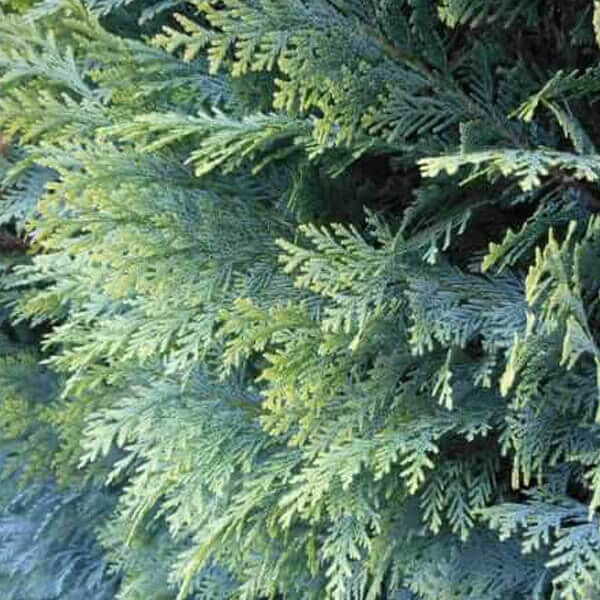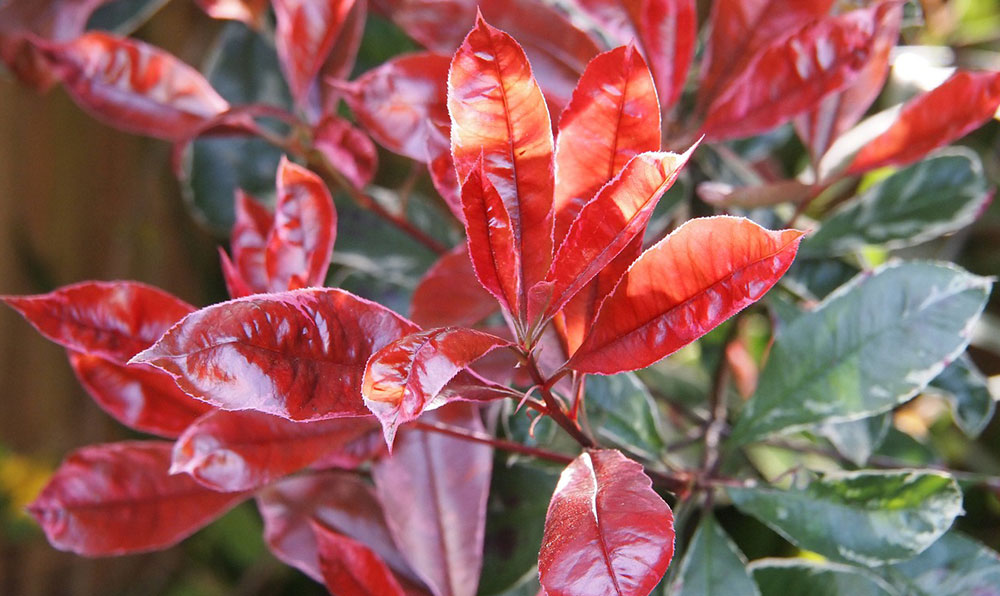Best Hedging Plants For Softening Walls
Best Hedging Plants For Softening Walls
Blog Article
Hedge Plants For Low Maintenance Gardens
Enhance your garden's appeal with lush hedge ranges such as Yew (Taxus), Thuja, Laurel, Photinia, and Bamboo, celebrated for their structural integrity and environmental advantages.
Yew and Thuja offer evergreen protection and winter season durability, while Laurel uses rapid development and broad, aromatic leaves.
Photinia adds seasonal beauty with its vibrant red foliage, and Bamboo provides a low-maintenance, serene ambiance.
These hedges enhance air quality, reduce sound, and develop tranquil, private areas.
Appropriate planting, spacing, and upkeep ensure vigorous growth and eco-friendly harmony.
Explore how these rich ranges can raise your garden's appeal and well-being.
Key Takeaways
Transform Your Garden With Lush Hedge Varieties
- Select Yew for its thick, evergreen growth and exceptional longevity.
- Go with Laurel for its fast growth and broad leaves, making sure quick personal privacy.
- Select Photinia for its lively seasonal foliage, which turns a striking dark red.
- Utilize Bamboo for a low-maintenance, winter-hardy hedge with aesthetic appeal.
- Space plants 2-3 per meter and prune frequently for optimum development and health.
Popular Hedge Plants
When changing a garden with rich hedge ranges, it's important to consider popular hedge plants such as Yew, Thuja, Laurel, and Photinia due to their distinct qualities and advantages.
Yew (Taxus) is extremely esteemed for its longevity and dense, green growth, making it a prime option for sustaining landscapes.
Thuja is kept in mind for its evergreen foliage and robust winter season durability.
Photinia includes seasonal vibrancy with red leaves that darken over time, producing vibrant visual appeal.
Laurel uses quick development and fragrant, broad leaves, suitable for quick privacy.
Furthermore, Bamboo is an exceptional choice for ambiance, offering a low-maintenance, winter-hardy alternative that improves the garden's aesthetic with its stylish, swaying canes.
These selections cater to a range of horticultural requirements and choices.
Advantages of Garden Hedges
Garden hedges provide a wide variety of advantages, making them a valuable addition to any landscape. These natural barriers are affordable to execute and provide significant wind protection, enhancing air circulation and adding to noise reduction. The thick foliage of hedges like Thuja and Beech guarantees personal privacy by obstructing visibility, developing a peaceful and secluded environment.
Hedges likewise play a vital function in microclimate regulation, providing a steady environment that promotes plant growth and decreases temperature variations. Their complex leaf structures filter pollutants, enhancing air quality and adding to a healthier garden community.
Moreover, hedges master sound reduction, soaking up and deflecting acoustic waves to lower ambient sound levels. This dual functionality of providing both acoustic and visual personal privacy boosts the total serenity and visual appeal of any garden.
Planting and Maintenance Tips
For an effective hedge, careful preparation of the planting area is essential. Make sure the soil has proper pH and drain to support strong root advancement.
Space the plants appropriately for the selected types. Water the hedge frequently during its preliminary development stage, changing as needed with seasonal changes.
Execute a methodical bug control and disease avoidance method, using organic or chemical treatments when essential. Routinely check for aphids, mites, and fungal infections.
Apply mulch to maintain wetness and suppress weeds. Seasonal pruning promotes dense development and air blood circulation, essential for plant health.
Following these standards will assist you cultivate a dynamic, well-maintained hedge that enhances the charm of your garden.
Spacing and Trimming Guidelines
Spacing and Cutting Standards
Correct spacing and trimming are crucial for cultivating healthy, aesthetically appealing hedges. Adequate spacing ensures each plant gets enough nutrients, light, and air flow.
Follow these guidelines for optimal hedge upkeep:
- Spacing: Position hedge plants 2-3 plants per meter to motivate robust development.
- Pruning Methods: Routine pruning is necessary for keeping desired hedge height and shape. Trim brand-new development in summer and cut down older wood throughout winter season.
- Seasonal Care: Change trimming techniques and schedules according to seasonal requirements to make sure plant health.
- Hedge Height: Frequently monitor and trim to maintain the preferred hedge height and achieve consistent looks.
Sticking to these actions will ensure your hedge flourishes, enhancing both the appeal and performance of your garden.
Selecting the Right Hedge
Choosing the Right Hedge
Picking the suitable hedge involves examining aspects such as mature height, foliage density, and environmental resilience. Successful hedge plant selection requires understanding each types' development qualities and site-specific flexibility.
For example, Yew (Taxus) provides excellent longevity and thick growth, while Thuja read more is notable for its winter strength. In addition, considering upkeep requirements is important; fast-growing species like Laurel or Privet need regular cutting, whereas low-maintenance options like Bamboo or Ivy might be preferable for those looking for minimal maintenance.
Environmental elements such as soil type, light availability, and wetness conditions ought to likewise guide the choice process. This careful technique ensures the selected hedges will prosper, supplying both visual and functional advantages to the garden landscape.
Shipment and Planting Recommendations
To guarantee your hedge plants thrive, they must be delivered by specialized carriers and planted quickly upon arrival.
Follow these essential actions for successful planting:
- Soil Preparation: Enrich the soil with natural matter to improve drainage and nutrient content.
- Planting Depth: Create a trench two times the width and equivalent to the depth of the root ball.
- Watering Methods: Water thoroughly after planting, keeping the soil consistently moist however not saturated.
- Mulching: Use a layer of mulch to maintain moisture and suppress weeds.
Client Support and Service
Offered the vital role of timely help in horticultural pursuits, our consumer support team is readily available six days a week through telephone, e-mail, and social networks to provide skilled recommendations and swiftly deal with any issues. Their devotion to fast action times guarantees client complete satisfaction by fixing questions related to plant health, optimal planting methods, and maintenance schedules.

-------------------
Telephone
6 days a week
Within 24 hours
This comprehensive assistance system, strengthened by an outstanding 9.3/ 10 customer score, highlights our commitment to boosting the gardening experience for every single client.
Regularly Asked Concerns
For How Long Does It Consider Hedge Plants to Develop?
Hedge plants generally require one to three years to become completely established, with the precise duration varying by species and growing conditions.
Effective care throughout this crucial period is vital for robust growth. Consistent watering, vigilant weed control, and appropriate fertilizer application are pivotal in promoting strong root development.
For example, fast-growing types like Laurel might develop faster, while slower-growing ranges such as Yew might take longer. Persistent maintenance accelerates the establishment procedure, leading to thick and healthy hedges.
What Are the Best Hedge Plants for Privacy?
The concern of the very best hedge plants for privacy involves assessing evergreen and deciduous options.
Evergreen hedges like Thuja, Laurel, and Cypress provide year-round protection, guaranteeing constant privacy.
In contrast, deciduous hedges such as Beech provide seasonal personal privacy, shedding leaves in cooler months.
Secret maintenance tips for personal privacy hedges consist of regular cutting, fertilizing in spring, and proper spacing-- generally 2 to 3 plants per meter.
Additionally, constant watering and persistent weed removal are essential for promoting healthy, dense development.
Can Hedge Plants Draw In Wildlife to My Garden?
Yes, hedge plants can draw in wildlife to your garden by supplying important benefits like shelter, food, and nesting websites, consequently enhancing regional biodiversity. For example, yew, holly, and laurel are outstanding for attracting birds, while ivy supports a range of insects.
Nevertheless, it is very important to note that there are some drawbacks, such as increased maintenance to handle pests and routine maintenance. Carefully choosing and maintaining hedge ranges can assist stabilize these disadvantages and advantages, ultimately promoting a lively and sustainable community in your garden.
Exist Any Blooming Hedge Plants Available?
Yes, there are flowering hedge plants available that can improve the appeal of your garden.
For example, Elaeagnus, likewise referred to as Olive Willow, produces fragrant white flowers in the fall, including a touch of elegance.
Photinia, another popular choice, showcases vibrant red leaves that mature into a rich green, developing a vibrant visual impact throughout the seasons.
To guarantee these plants prosper, it's vital to practice proper pruning strategies and seasonal upkeep, such as cutting new development in the summertime and cutting back in the winter season.
These measures will help preserve the health and aesthetic appeal of your flowering hedges.
How Do I Prevent Pests in My Hedge Plants?
To prevent insects in hedge plants, use natural pest control methods and maintain appropriate hedge care. Introduce useful bugs like ladybugs, which victimize damaging pests, to produce a balanced community.
Routinely examine your hedges for indications of problem and without delay remove any affected parts to prevent the spread. Guarantee the health of your hedges by applying balanced fertilizers and offering adequate water.
Utilize mulching to retain soil wetness and correct spacing to lower plant tension and promote robust growth. These practices collectively help in minimizing bug concerns and preserving a healthy hedge.
Conclusion
In essence, selecting the right hedge varieties such as Yew, Thuja, and Laurel can transform any garden into a serene sanctuary. These plants supply year-round plant, improve aesthetic appeal, and deal useful benefits like noise decrease and wind security.
Proper planting strategies, precise spacing, consistent watering, and seasonal cutting are crucial for optimal growth.
Reputable delivery services and skilled consumer support ensure a smooth experience from purchase to planting, making it simpler than ever to raise your outside space.
Garden hedges use a wide variety of benefits, making them an important addition to any landscape. These natural barriers are affordable to carry out and offer substantial wind security, enhancing air blood circulation and contributing to noise decrease. The dense foliage of hedges like Thuja and Beech makes sure privacy by blocking exposure, developing a peaceful and remote environment.

Pruning Strategies: Routine pruning is vital for preserving desired hedge height and shape. Cut new growth in summer season and cut back older wood throughout winter.
Report this page